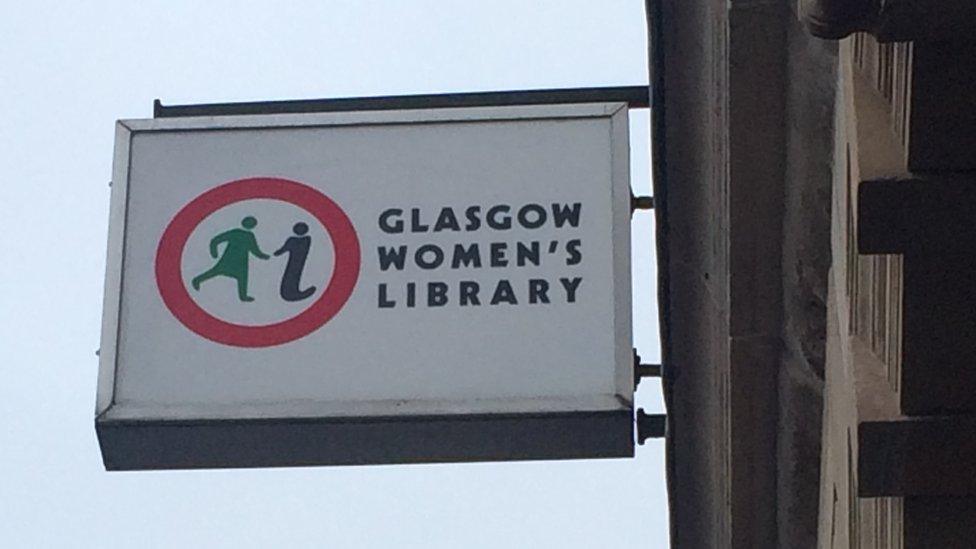Women making an exhibition of themselves
- Published
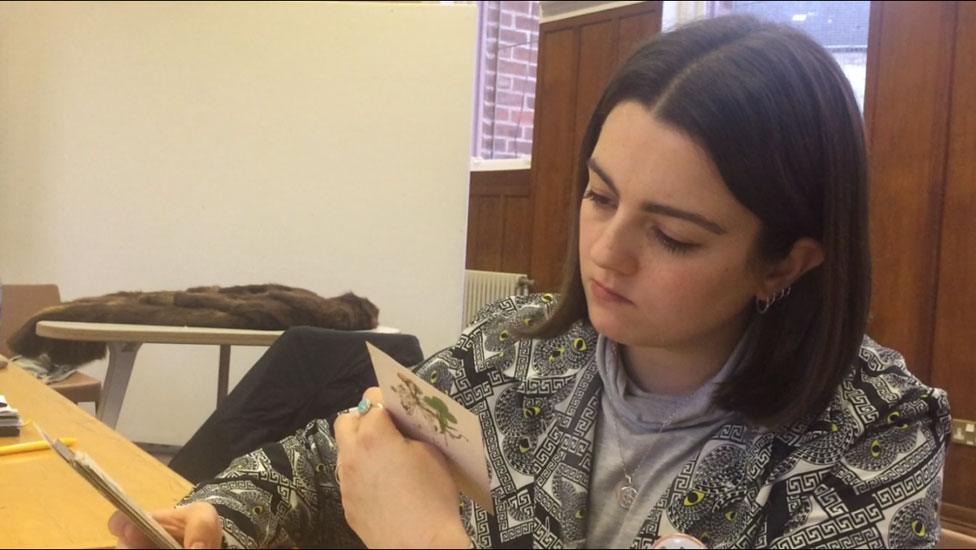
Community curator Rhia Laing has picked out some of the library's postcard collections
From suffragette memorabilia, to women's roller derby crash helmets, to knitting patterns - the collection of objects at Glasgow Women's Library tells the diverse stories of women's lives.
Now the library - which is the UK's only accredited museum dedicated to women's history - wants to make a permanent exhibition and has recruited community curators, volunteers, who are playing detective to choose which objects they think tell women's history best.
"What's really interesting about this collection," says assistant curator Krisztina Lackoi, "is that we've got ephemera and material that maybe wasn't deemed worthy enough to preserve or to collect.
"So we've got lots of sewing patterns, lots of knitting patterns and lot of things that would have just been lost or discarded."
In this material there are stories to tell but up until now much of it has been hidden away.

Krisztina Lackoi wants many women to bring their own experiences to the collection
The library wants its new display to reflect women's experiences and viewpoints. So far the project has included 16 community curators.
"They're all from very different backgrounds, very different life experiences," Ms Lackoi adds.
"So obviously when they look through the collections, they bring all of that knowledge and experience to bear and I think it's going to be all the more rich and interesting for that."
Each week the community curators have gathered together to look through items from the collections, deciding which might form part of the final exhibition.
"Every box you open you get pulled into the history in that box," says one of the community curators, Diane.
One of her favourite items from the collection is a blue hat with a ribbon, made from a 1950s knitting pattern.
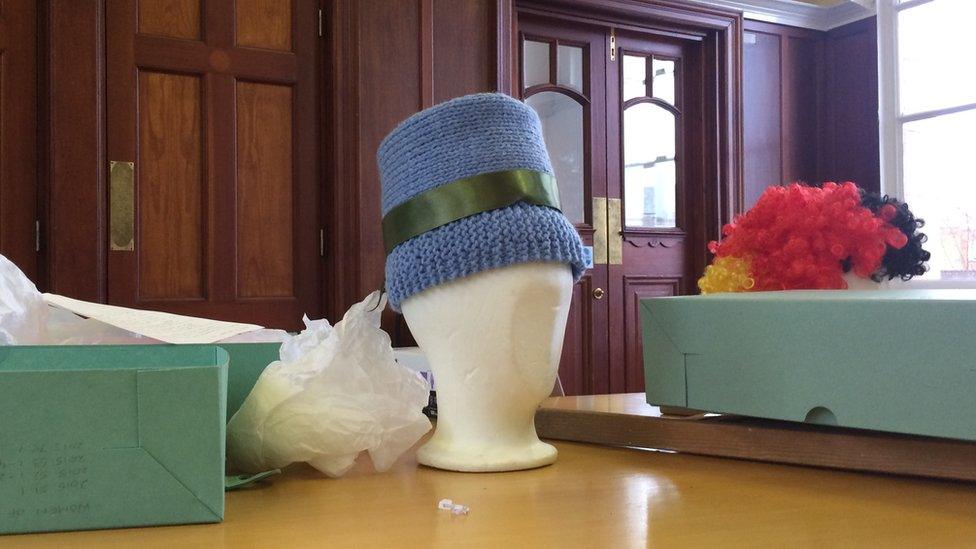
Fashion is part of the story revealed by the collection
Trying it on broke the ice when they all got together as a group she says, but there is more to it than that.
She says: "Looking at knitting as the craft that was then, because there wasn't much money, whereas now it's come back in vogue again. So I think the 'then and now' of it appealed to me."
As they have been meeting over the months, the group has been looking for something which could act as a centrepiece for the exhibition, an item which could help make a story which hangs together.
Out of an ordinary black bin bag a vintage mink coat spills out onto the table to some gasps from the group gathered round. The collections at the women's library are donated and this was given by a family member of the woman who bought and wore it.
"This would have been a fabulously expensive garment at the time," Krisztina Lackoi explains, "and she would have looked utterly glamorous and fabulous wearing it."
The woman in question never married and had a career, so this one object can tell much wider stories about women in the workplace.
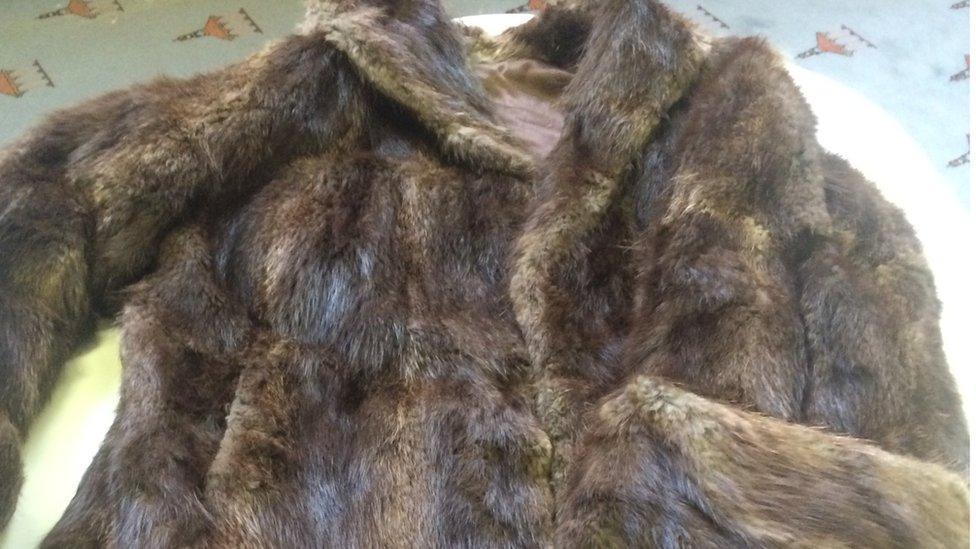
A fur coat represents a woman's determination to be successful in her own right
"The mink coat is a kind of status symbol, the sign that she made it and she did it herself," says another community curator, Fiona Turnbull.
"She didn't have a husband or a boyfriend to buy these things for her."
"I always think that there are stories, particularly of the women, that get left out, so if you can find them hidden in things like the letters and other artifacts that might remain, there's a story waiting to be told."
As well as looking through the collections themselves, the group has been exploring the library's main spaces and nooks and crannies - all potential display points.
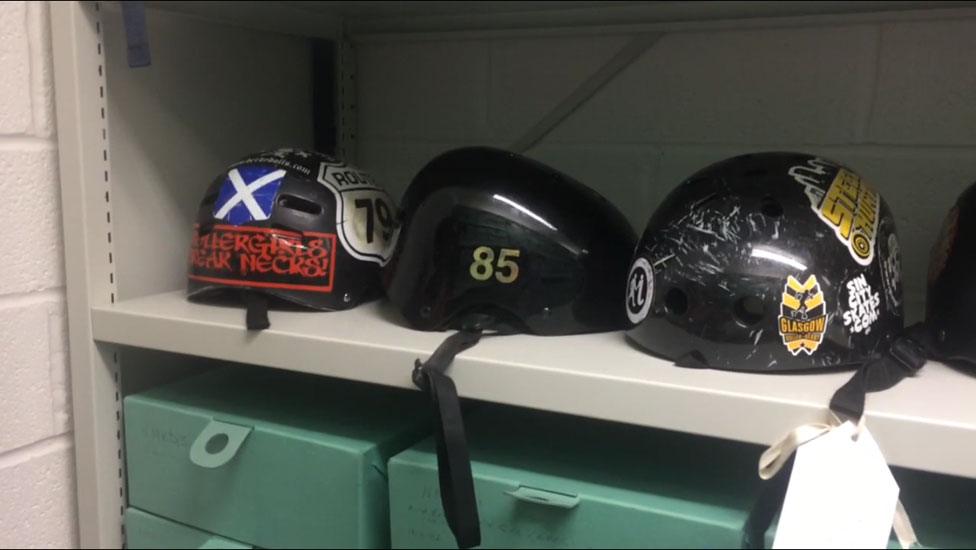
Some of the items represent very recent experiences of women in Glasgow
This is a busy place with events, screenings and other groups meeting regularly. Unlike a more usual exhibition space they will have to work with and around those constraints.
The exhibition is due to open in the spring and before then there's lots of work to be done and difficult decisions to be taken about what is finally included.
Thinking about the work of the community curators, Krisztina Lackoi says she believes it is unusual to have a permanent display produced in this way.
"We're now at the stage of whittling down to a short list which is extremely painful and difficult because we have such amazing things and we want to show off as much as possible, but we can't be too greedy."
